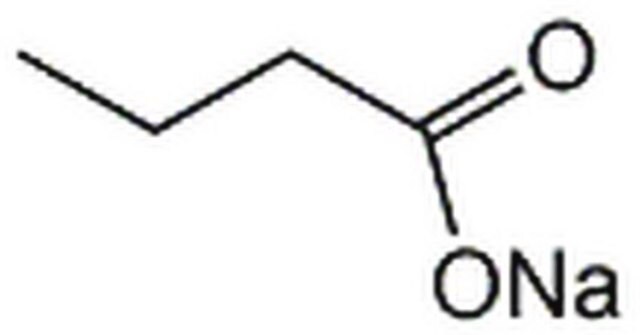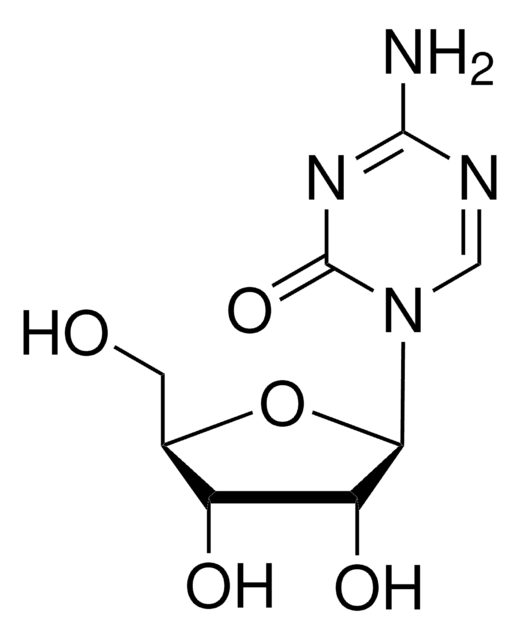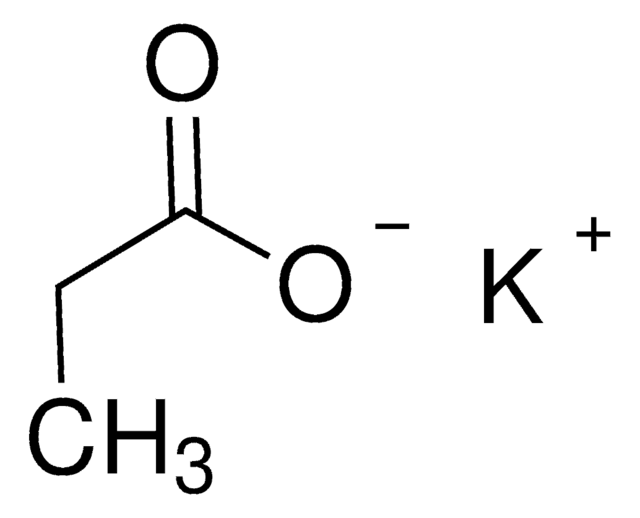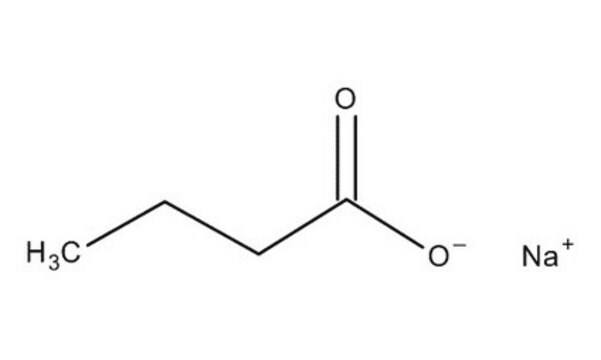P5436
Sodium propionate
≥99.0%, BioReagent, suitable for insect cell culture
Synonym(s):
Propionic acid sodium salt
Sign Into View Organizational & Contract Pricing
All Photos(2)
About This Item
Linear Formula:
CH3CH2COONa
CAS Number:
Molecular Weight:
96.06
Beilstein:
3566934
EC Number:
MDL number:
UNSPSC Code:
12352211
PubChem Substance ID:
NACRES:
NA.75
biological source:
synthetic (organic)
Recommended Products
biological source
synthetic (organic)
Quality Level
product line
BioReagent
Assay
≥99.0%
form
powder
technique(s)
cell culture | insect: suitable
mp
285-286 °C (lit.)
solubility
H2O: 1 g/mL, clear, colorless to very faintly yellow
SMILES string
[Na+].CCC([O-])=O
InChI
1S/C3H6O2.Na/c1-2-3(4)5;/h2H2,1H3,(H,4,5);/q;+1/p-1
InChI key
JXKPEJDQGNYQSM-UHFFFAOYSA-M
Looking for similar products? Visit Product Comparison Guide
Application
Used as a mold inhibitor in insect cell culture applications.
Biochem/physiol Actions
Sodium propionate has an ability to prevent ketosis in dairy cattle.
Storage Class Code
11 - Combustible Solids
WGK
WGK 1
Flash Point(F)
Not applicable
Flash Point(C)
Not applicable
Personal Protective Equipment
dust mask type N95 (US), Eyeshields, Gloves
Choose from one of the most recent versions:
Already Own This Product?
Find documentation for the products that you have recently purchased in the Document Library.
Customers Also Viewed
Use of sodium propionate in the prevention of ketosis in dairy cattle
Schultz LH
Journal of Dairy Science, 41(1), 160-168 (1958)
Zhenhua Zhou et al.
Journal of cerebral blood flow and metabolism : official journal of the International Society of Cerebral Blood Flow and Metabolism, 41(2), 267-281 (2020-03-11)
Sodium butyrate, a short-chain fatty acid, is predominantly produced by gut microbiota fermentation of dietary fiber and serves as an important neuromodulator in the central nervous system. Recent experimental evidence has suggested that sodium butyrate may be an endogenous ligand
Elena Zagato et al.
Nature microbiology, 5(3), 511-524 (2020-01-29)
The microbiota has been shown to promote intestinal tumourigenesis, but a possible anti-tumourigenic effect has also been postulated. Here, we demonstrate that changes in the microbiota and mucus composition are concomitant with tumourigenesis. We identified two anti-tumourigenic strains of the
Bistra B Nankova et al.
PloS one, 9(8), e103740-e103740 (2014-08-30)
Alterations in gut microbiome composition have an emerging role in health and disease including brain function and behavior. Short chain fatty acids (SCFA) like propionic (PPA), and butyric acid (BA), which are present in diet and are fermentation products of
Virginia T Guidry et al.
Environmental health perspectives, 123(7), 705-711 (2015-03-18)
Exposures to environmental phenols and parabens may be harmful, especially in utero. Prior studies have demonstrated high within-person variability of urinary concentrations across pregnancy. We sought to measure phenol and paraben biomarker concentrations for the Norwegian Mother and Child Cohort
Our team of scientists has experience in all areas of research including Life Science, Material Science, Chemical Synthesis, Chromatography, Analytical and many others.
Contact Technical Service








